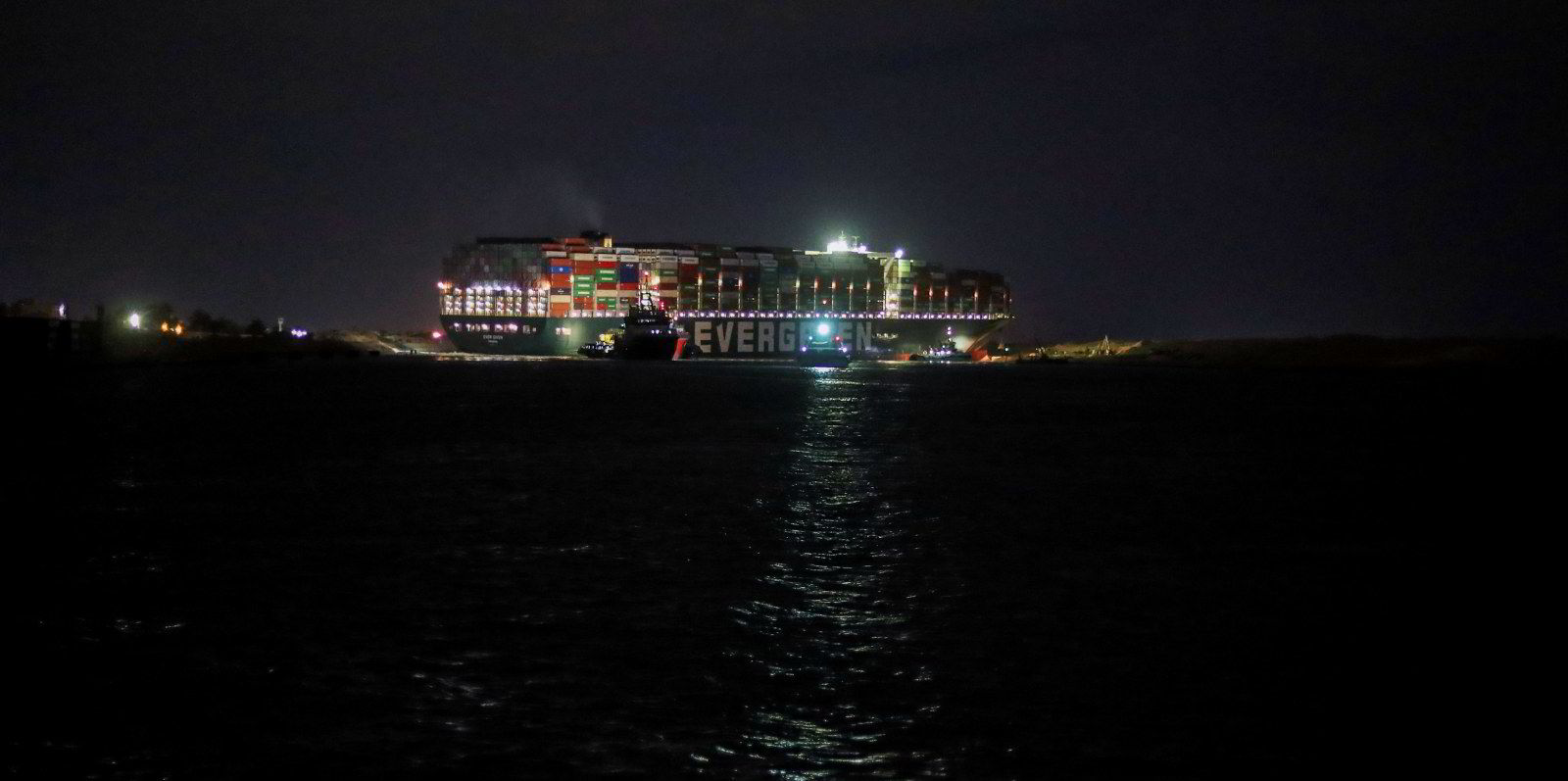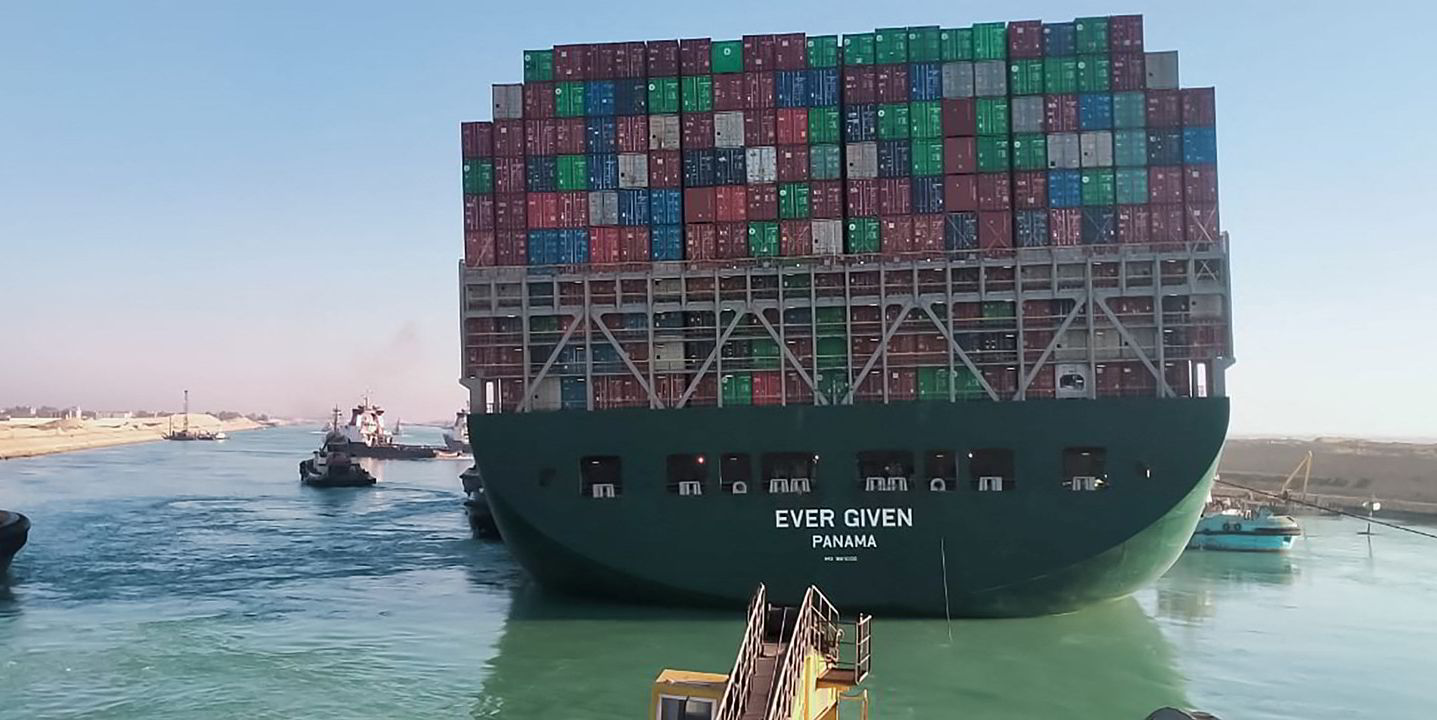Ripple effects of the Ever Given grounding are likely to be felt for some time yet, according to analysts at Clarksons Platou Securities.
In a note to clients, Frode Morkedal and Omar Nokta said such a serious blockage has not been seen for at least 45 years, with previous groundings usually resolved within hours.
"There is no simple solution for trade to return to 'normal' for some time," they added.
There will likely be longer-lasting effects due to vessel delays and dislocations, particularly for containerships.
"The Suez Canal is a highly trafficked area and is a major choke point across all shipping sectors. In terms of total tons moved worldwide, approximately 9% of all trade passes through the canal," Clarksons Platou said.
The biggest boxship disruptions have already been seen on Asia-Europe routes, which use the waterway nearly exclusively.
"Thus logistical complexities are likely to remain for much longer," Morkedal and Nokta said.
Bigger cargo, bigger problem?
The recent boom in boxship markets may have contributed to the current difficulties in Suez, the analysts pointed out.
The huge 20,388-teu Ever Given is probably carrying its highest number of containers since it was delivered in 2018, and this weight has made refloating operations even more difficult, they added.
Overall, containers represent just about half of all tonnage carried through the Egyptian waterway.
"Container freight rates had been showing some modest signs of easing in recent weeks from very high levels and we expect they will remain elevated for longer," Clarksons Platou said.
The investment bank reported that liner companies have considered rejecting new cargo requests they cannot realistically fulfil as a way to normalise operations quickly.
The containership fleet today is steaming at 14.5 knots, up moderately from 14 knots a year ago.
"This of course comes with significantly more fuel costs and emissions and may actually lead to even more congestion at ports," the analysts added.
Suezmax, aframax and LR2 tankers had been seeing stronger demand and higher rates before the Suez Canal issue, and tighter vessel supply for the near-term seems likely to keep rates elevated.
Tanker 'jolt'
"This may seem short-term in nature but we view vessel supply constriction as a jolt to the system just ahead of stronger market dynamics expected particularly for the tanker sector," Morkedal and Nokta said.
Opec is expected to meet this week to discuss May production plans, with no change in output viewed as likely.
Suezmaxes and aframaxes have been riding high at $20,000 per day, against VLCCs at $10,500 per day.

The threat of vessels ballasting from Asia to the more active Atlantic Basin market has been removed for now due to the blockage, Clarksons Platou said.
"Shipowners normally ballast into the Mediterranean/European market through the Suez Canal and normally would not go around the Cape of Good Hope unless there were exceptional earnings potential."
Gibson Shipbrokers said the biggest impact will be felt in terms of tanker supply and resupply, and how trading patterns are disrupted.
Months of after-effects
"Delays coming through the canal simply mean that it will take longer for these vessels to come open for business once again," the broker added.
"In some cases, the supply impact could continue to be felt months down the line."
The broker gave the example of an LR2 trading from the Mediterranean to Japan.
The vessel would normally be open in Fujairah after 55 to 60 days.
If the tanker has to transit via the Cape of Good Hope, it would not be available for business in the Middle East for 65 to 70 days.
"Ultimately longer voyages and increased delays will lead to higher vessel utilisation which is undoubtedly positive for freight rates," Gibson said.
Trading change?
But the UK broker added that traders will also have to re-evaluate their trading strategies.
Crude and products which might have been exported from the Mediterranean and Black Sea to Asia might stay closer to home if freight costs and crude price differentials incentivise more regional trade, Gibson believes.
"Likewise, cargoes from the Middle East which typically head into Europe via the canal may end up being sold to Asia, creating more regionalised trade," the broker added.
"The economics between different vessel sizes could also come into effect, with the improved economies of scale offered by VLCCs, suezmaxes and larger product carriers lending greater support to these asset classes."
Read more
- Ever Given: It is time to double track the entire Suez Canal
- Sumed Pipeline can take up the slack as tankers remain stuck at Suez
- Shoei Kisen says Ever Given remains stuck despite reports it has been refloated
- Monday set for closely watched refloat attempt for Ever Given
- Ever Given moves, but not enough to uncork the Suez Canal as queue soars to 327 ships








